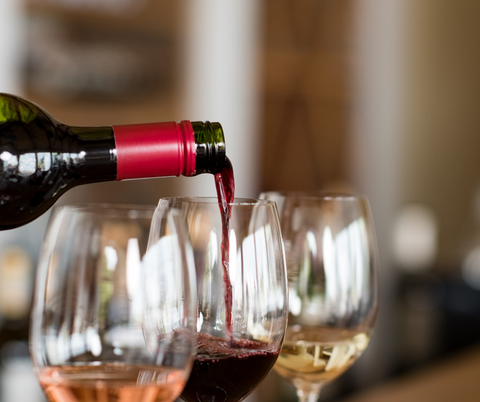
4 tips on how to choose wine
Share
Do you often have trouble choosing a wine you like in shops or restaurants? Or do you keep buying the same bottle over and over again? If your answer is yes in both cases, then you are not alone. And we're not talking about whether it's white or red :-) Knowing how to choose the right wine for a certain dish requires a little more experience and, above all, not being afraid to try something unknown. We will give you 4 tips on what to choose and what to focus on.
1. Will the food be more flavorful or heavier? Then have a similarly full-bodied wine with it
The recommendation that red wine goes well with meat and white wine with fish is too general. It is more important that the wine and the food complement each other. Heavy food is usually thick and strongly flavored - meat sauce, spicy dishes, hearty soup or stew - requires a strong flavored wine to help "cut" the flavor of the food. You don't want the food to overpower the wine and vice versa - both should have similar depth.
Wines that are described as full, deep, complex, rich or structured are best paired with heavier foods. Even white wines can be deep and complex, so they go well with spicy and bold food.
Wines that are described as light, balanced, sparkling or refreshing are great for lighter dishes with less strong flavors such as vegetables, pasta, fish, chicken and lighter cheeses.

2. Find a wine flavor that simply complements the flavor of the food
For example, pair a light citrusy white wine with "lemon" chicken. To put it simply - take a deep red wine and compare it to grilled pork. Does it match in color? Pairing will help make the food experience great and highlight key features, both on the plate and in the wine.
When choosing a wine based on complementary flavors, think about how the food would taste if that flavor were added to the food. For example, if the wine is a deep red with "hints of chocolate, spice and blackberry," ask yourself if chocolate, spice, and blackberry would look out of place on a plate with that food.
3. Be bold and choose contrasting flavors to highlight the food
There are two directions when pairing wines with food - either the flavors are complementary or they are opposite. You should try both approaches before you know which combination works best for you. When pairing, think about balance. Salty and acidic food, such as oysters, is well balanced by a fruity, softer Sauvignon Blanc.
When thinking about contrasting flavors, also think about the acidity and texture of the food. Fatty or creamy foods go well with wines with higher acidity, acidic foods are well complemented with fuller wines. Complex dishes with lots of flavor, such as paella, contrast well with simpler, balanced wines. This allows the wine to stand out before the meal.
4. Pair sweeter and fruit-inspired wines with spicier dishes
It is better to "cut" spicy food with a sweeter wine, which naturally complements it. Lighter wines can be red or white. Sweeter wines such as Riesling pair well with spicy foods, while oak-barrel Chardonnays go well with creamy dishes or dishes that include herbs and spices.
To pair with spicy foods, look for wines with citrus, berry flavors, floral notes, and hints of subtle spices like vanilla. When reading labels, focus on fresher and sweeter fruit notes in the description.

The best way to learn to distinguish wines according to their characteristics is to go beyond the wines you have already tried and known. Don't be afraid to buy a wine you've never heard of or whose name you can't even pronounce. You will be surprised what you can learn and discover about wines by tasting them. The next time you buy wine, first think about what kind of food you want to drink it with and also read the labels on the back of the bottle, where you can find information from the winemaker about the type of wine and his recommendations on what kind of food it is suitable for. So don't worry and go for it!
